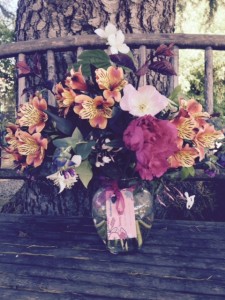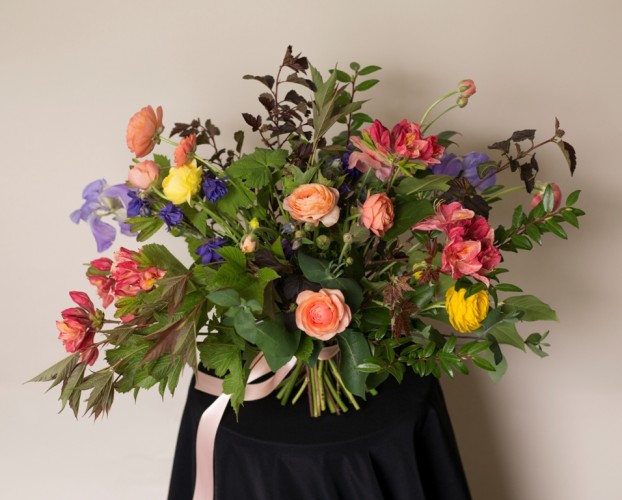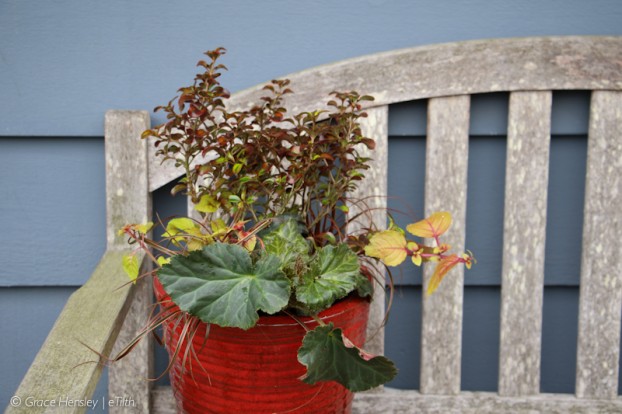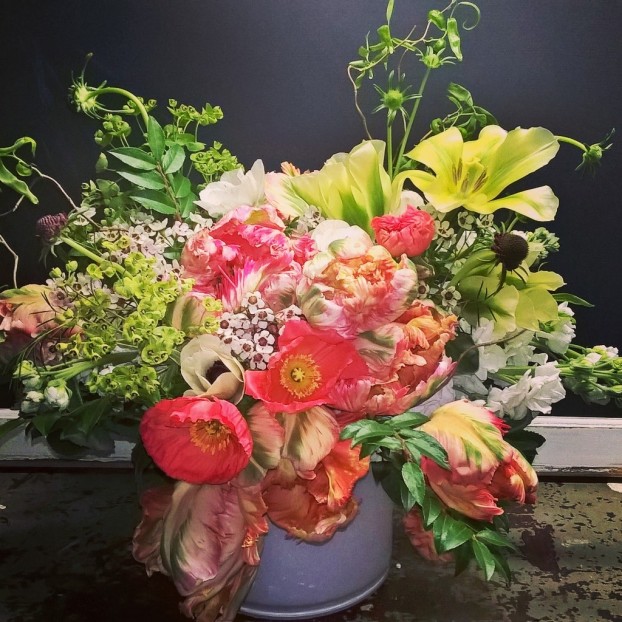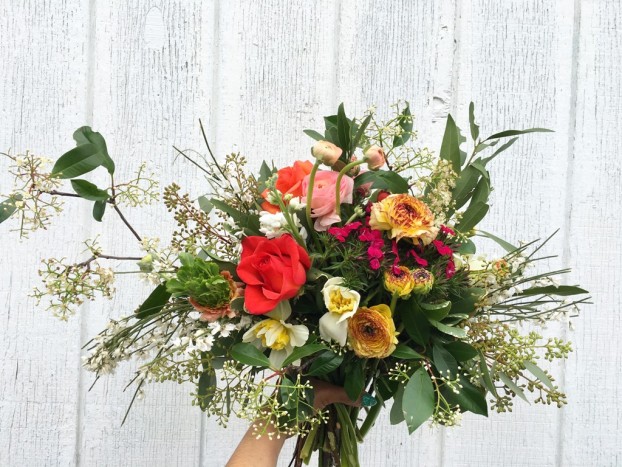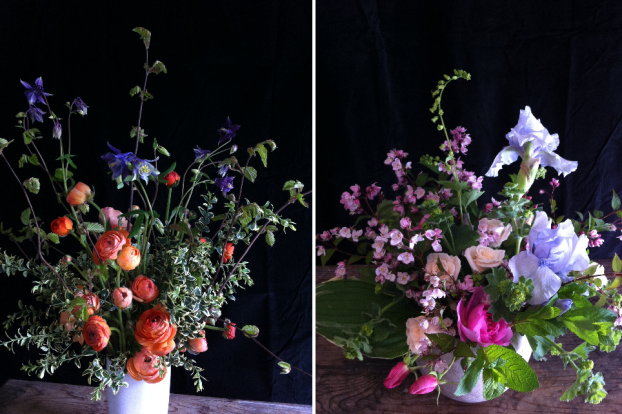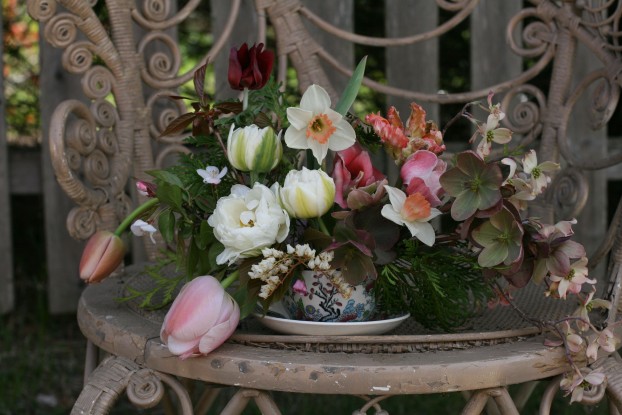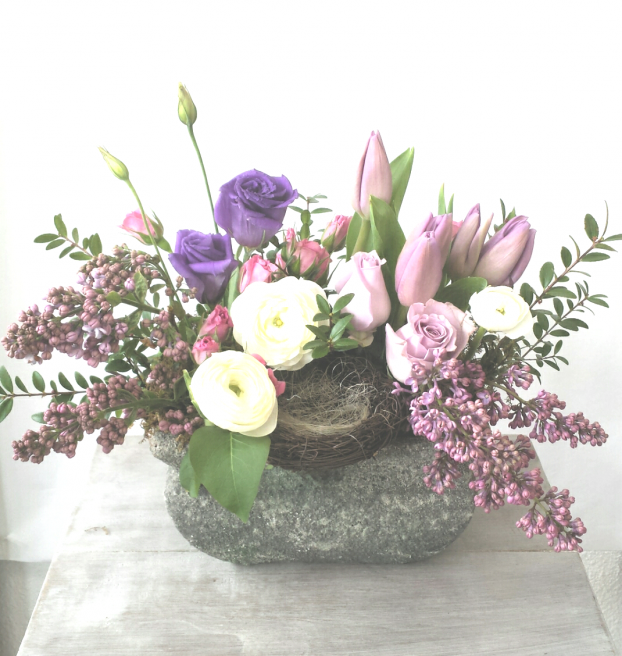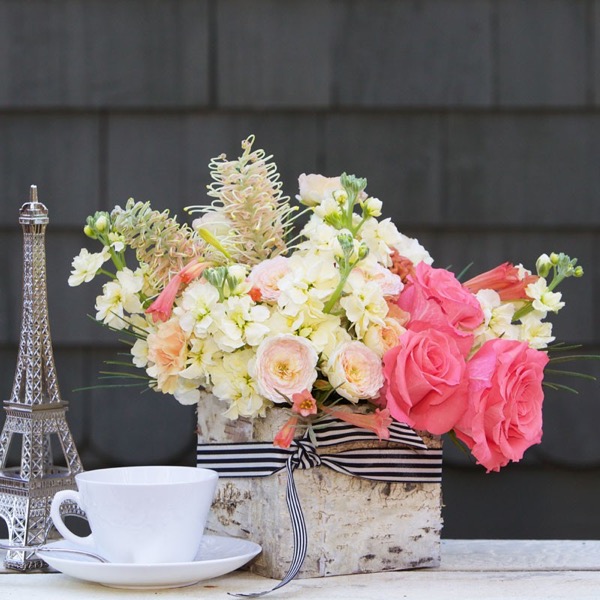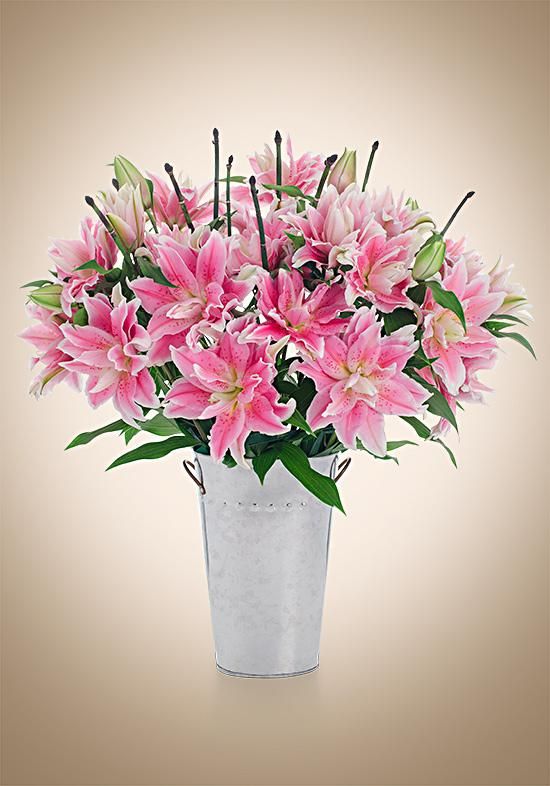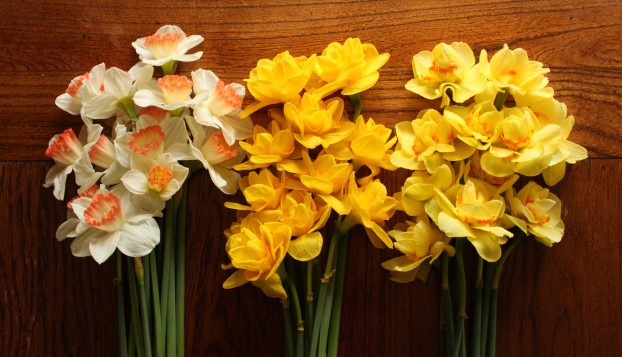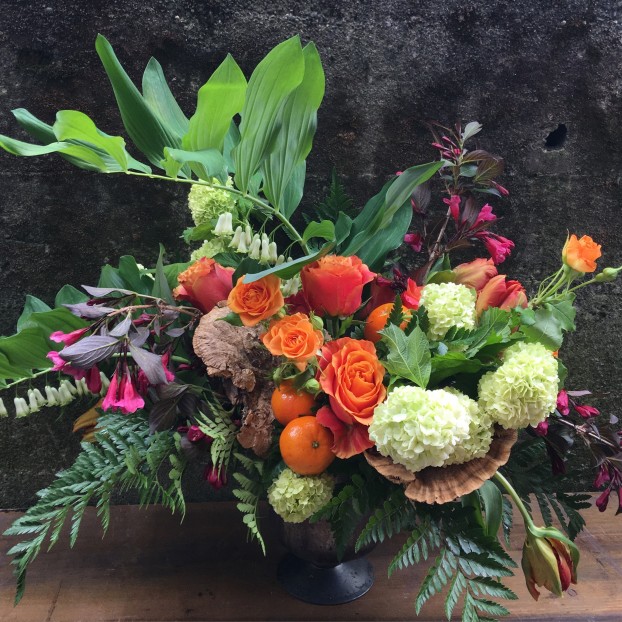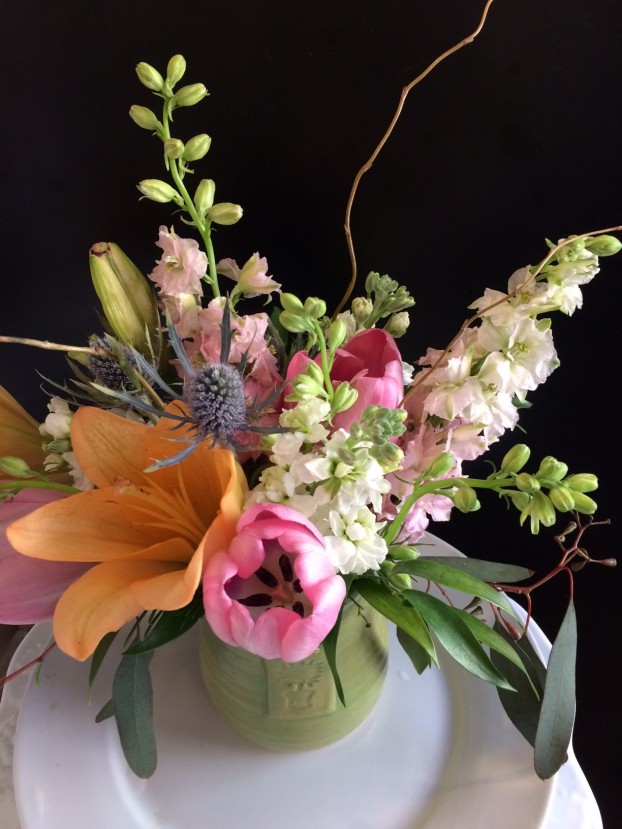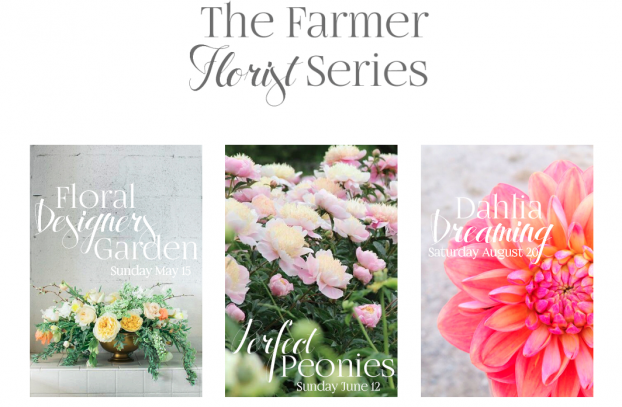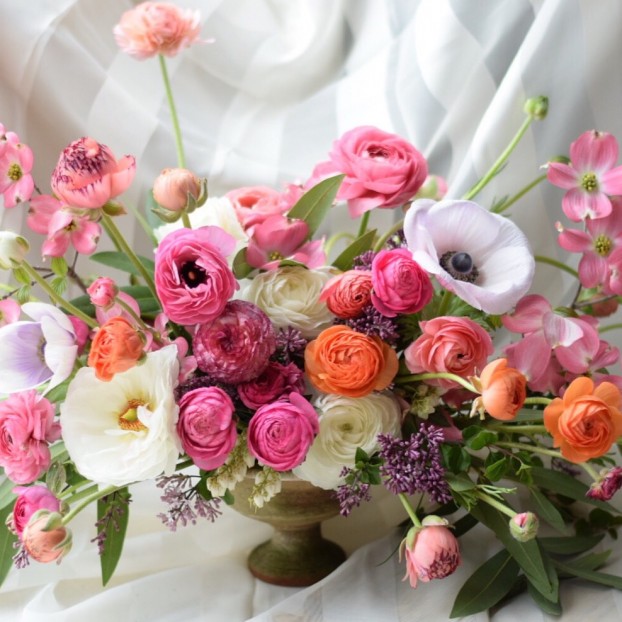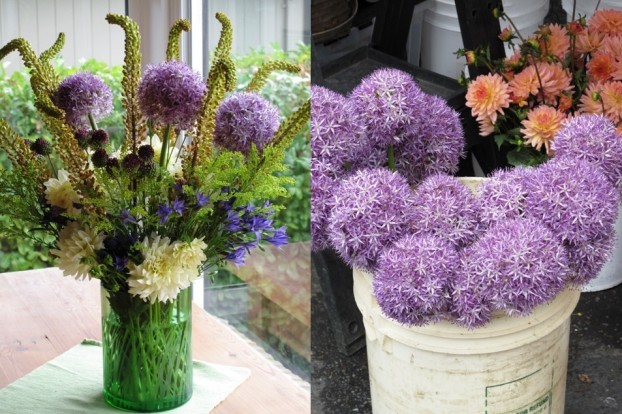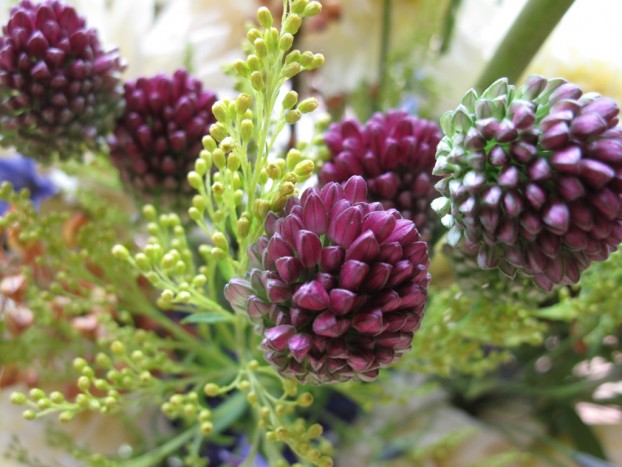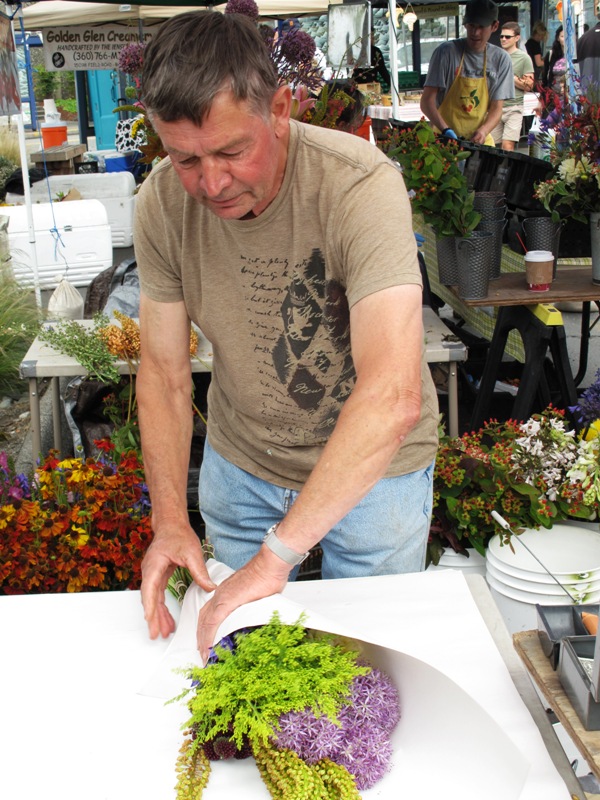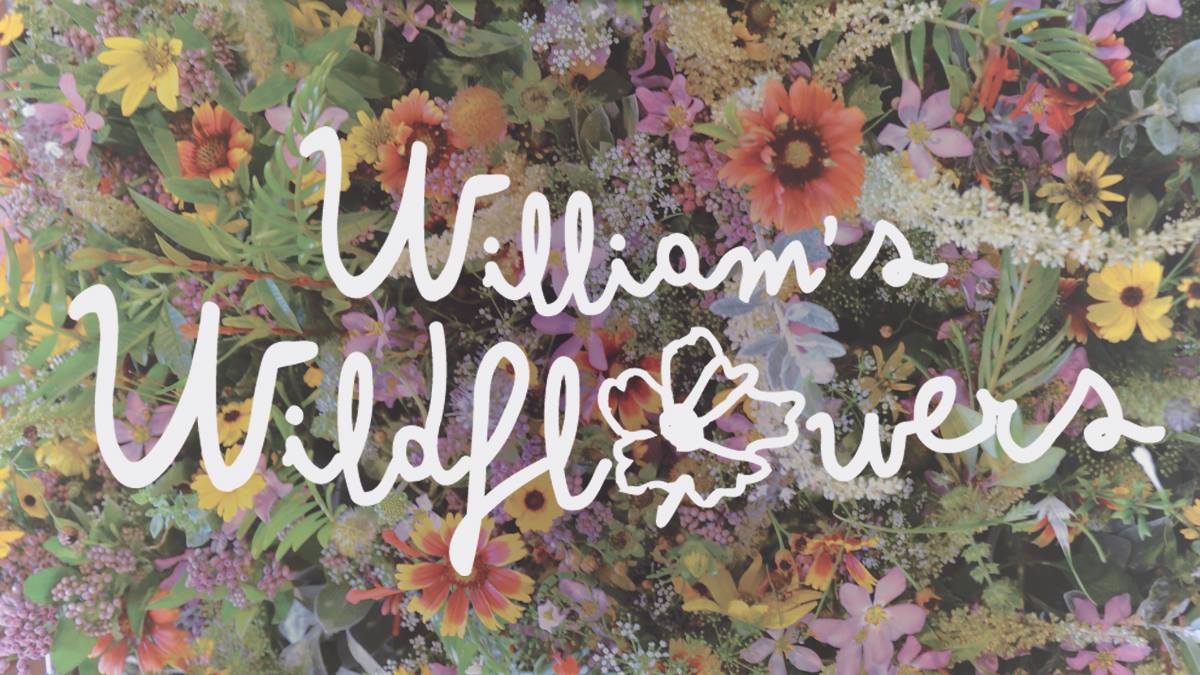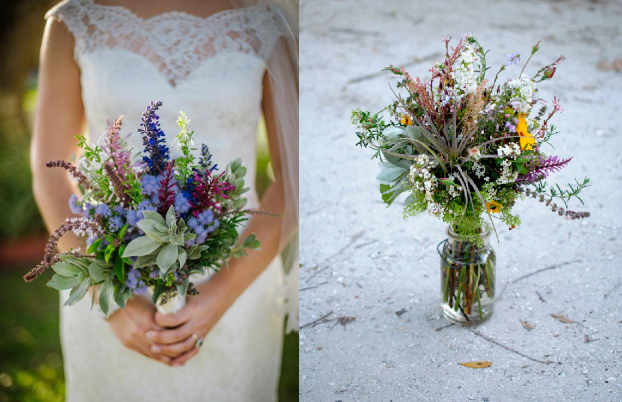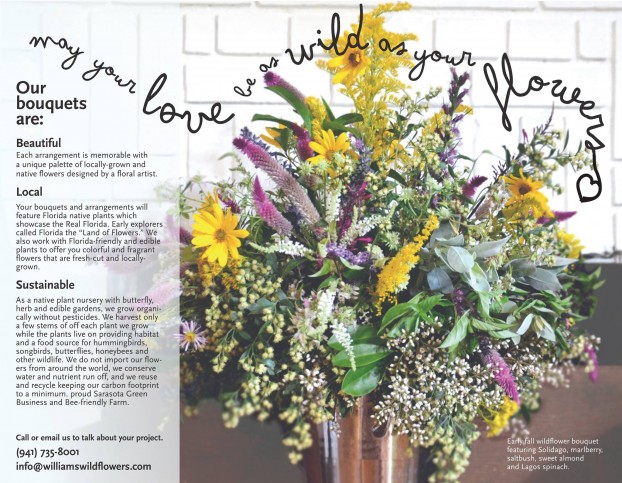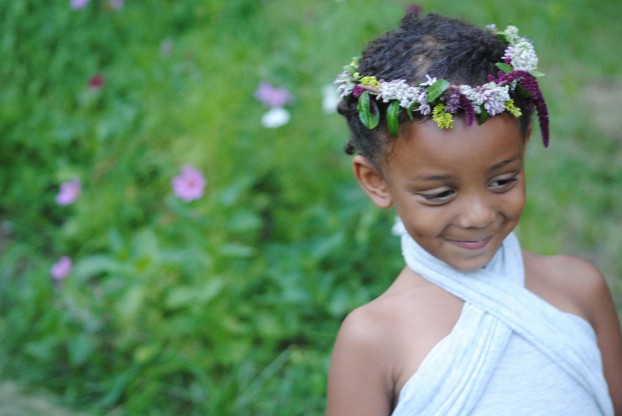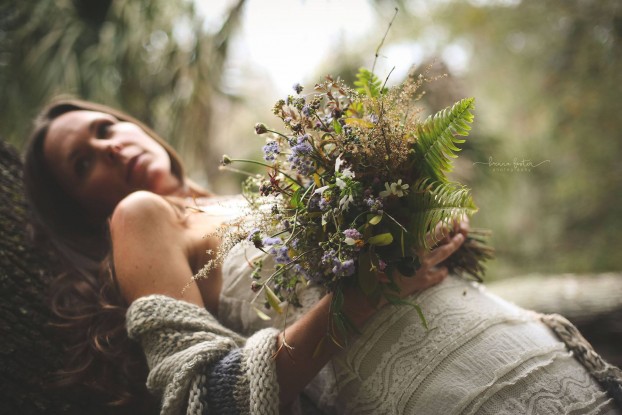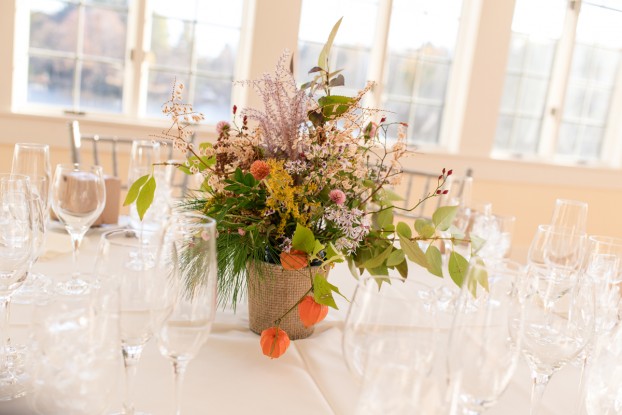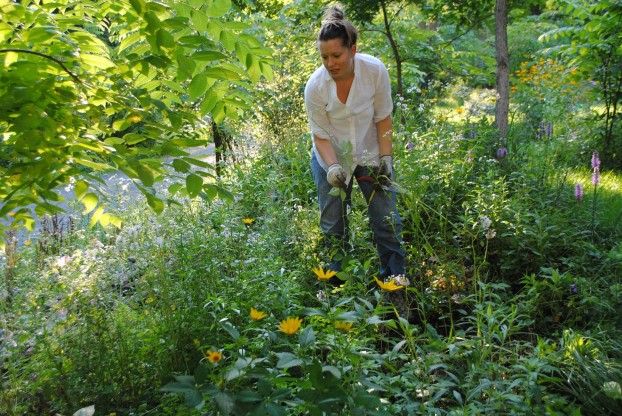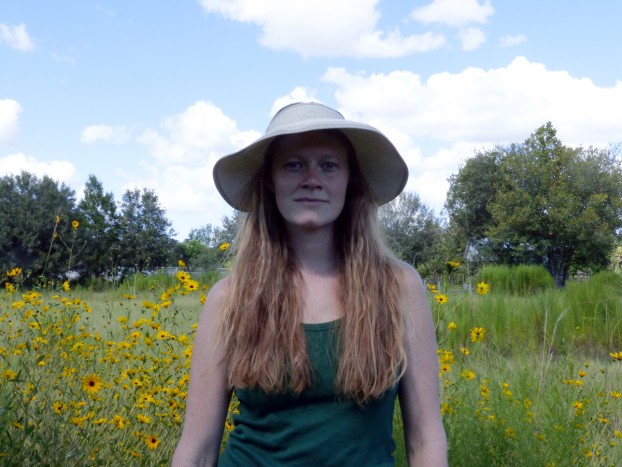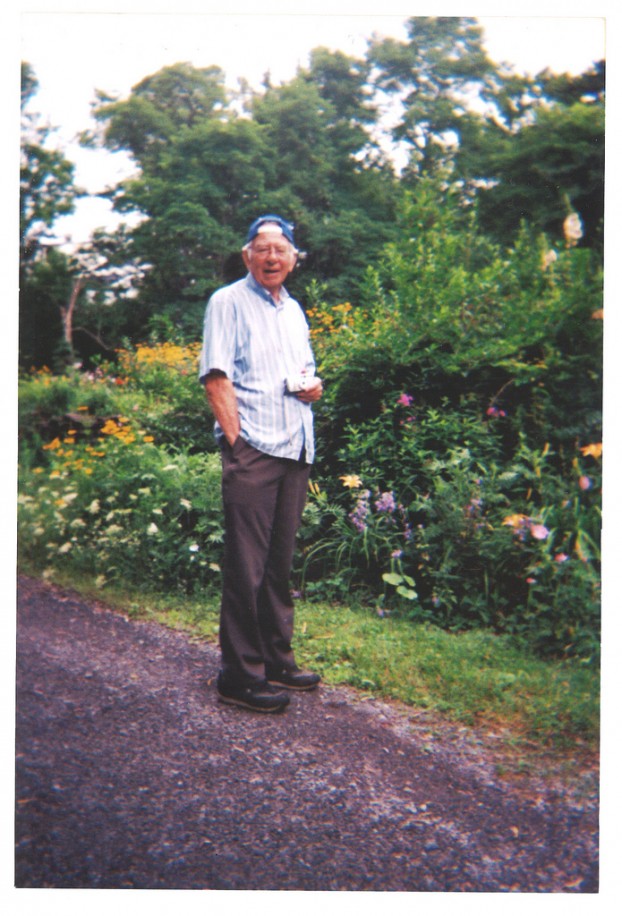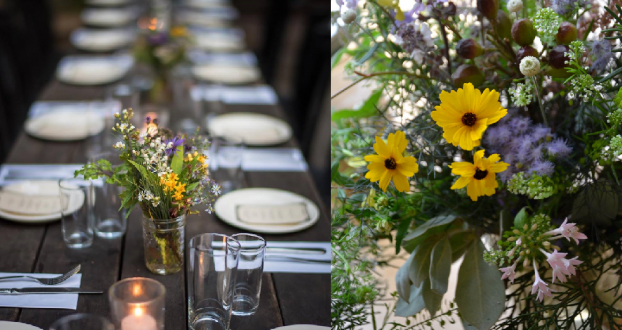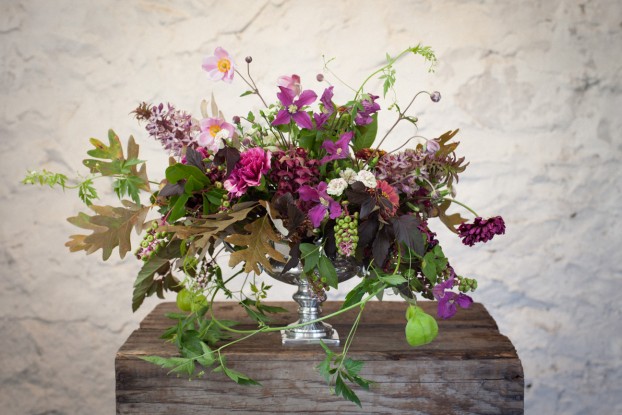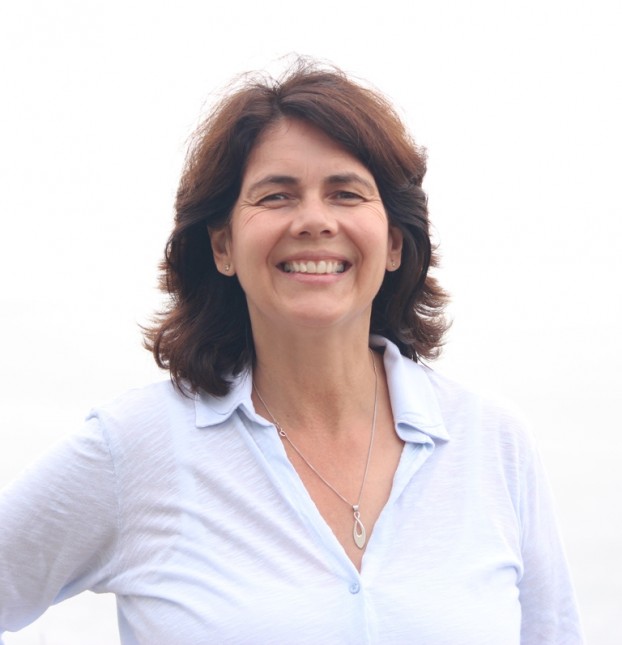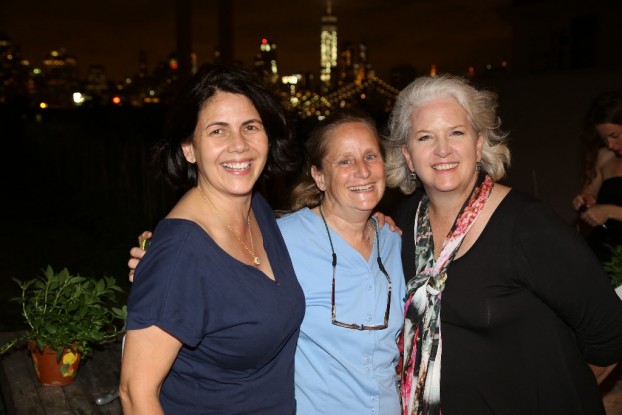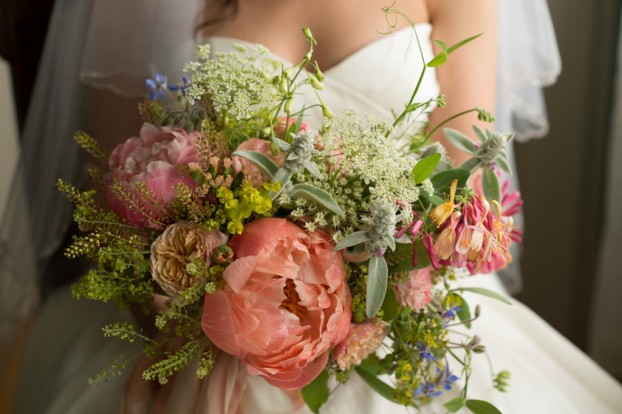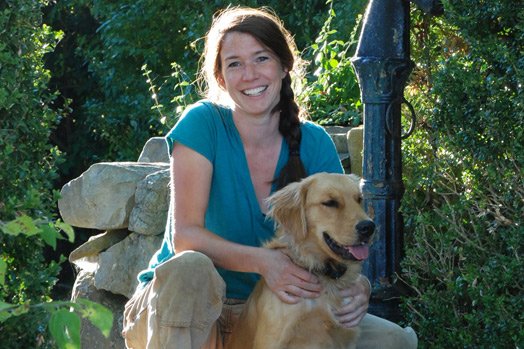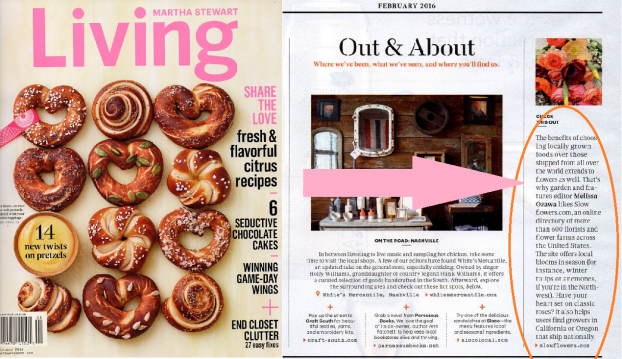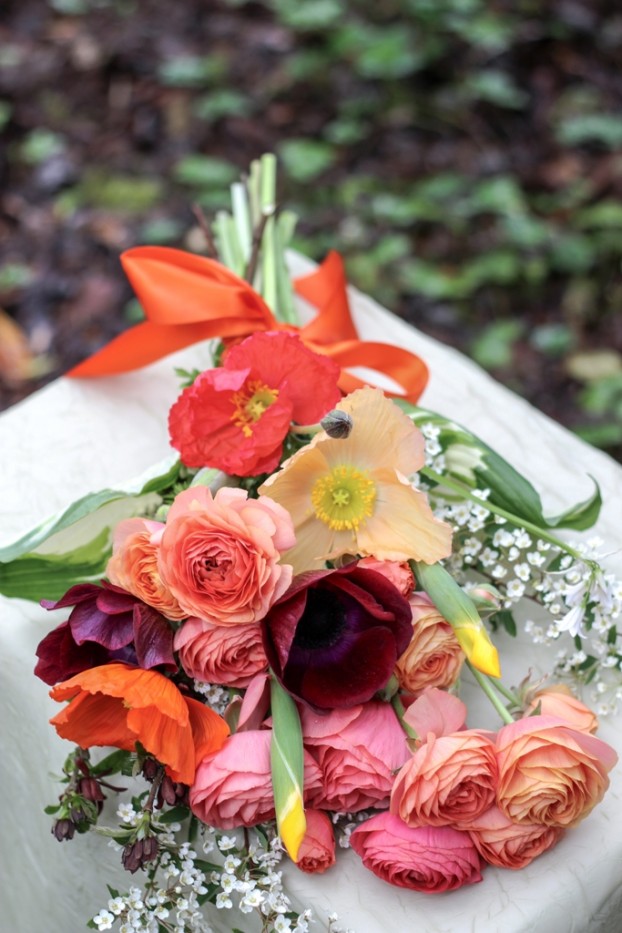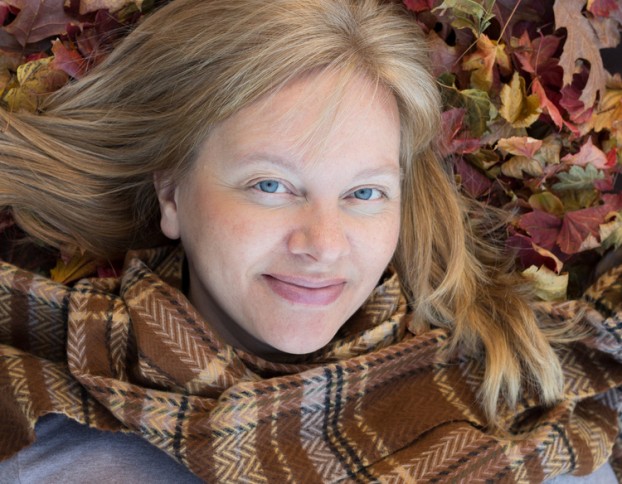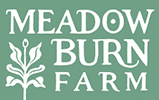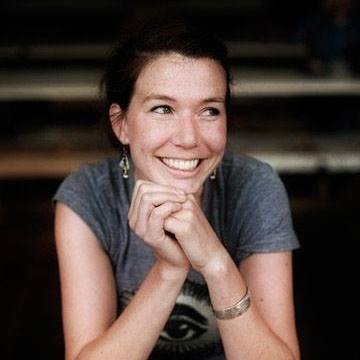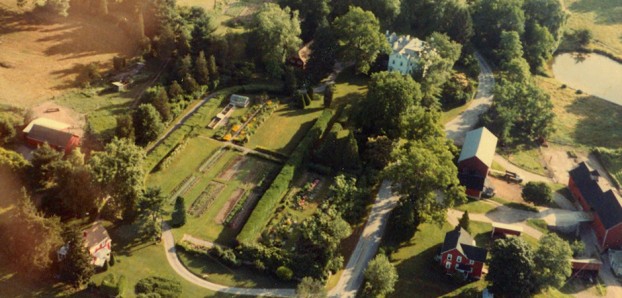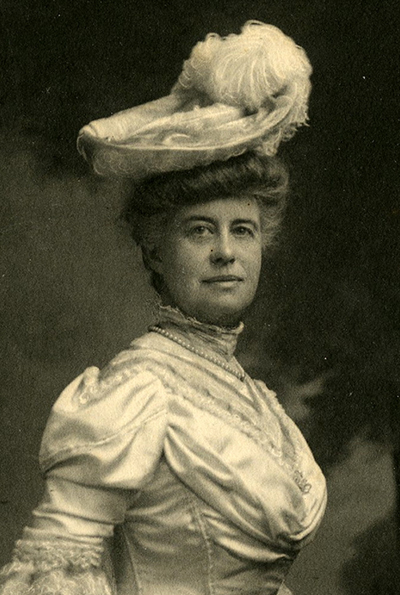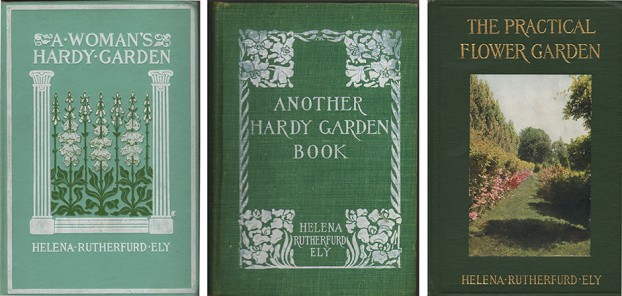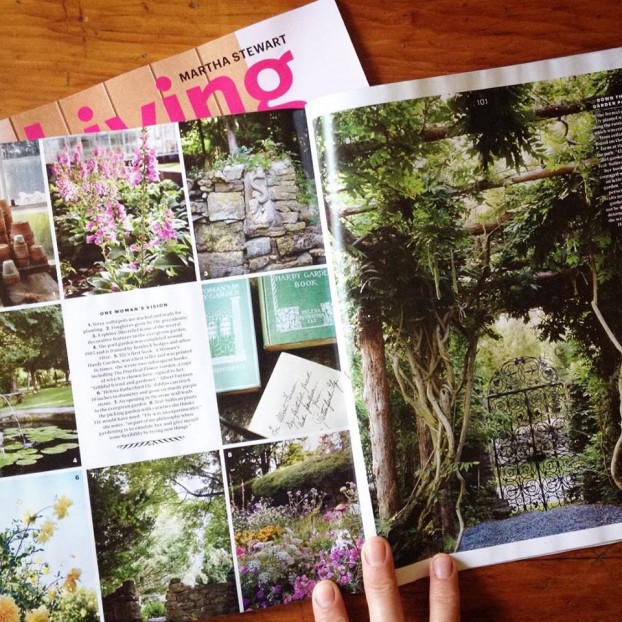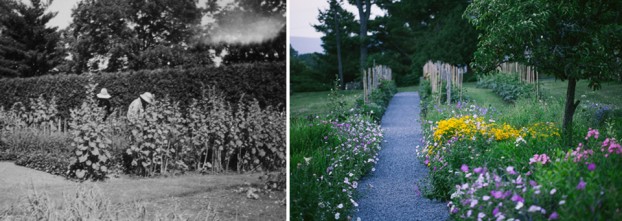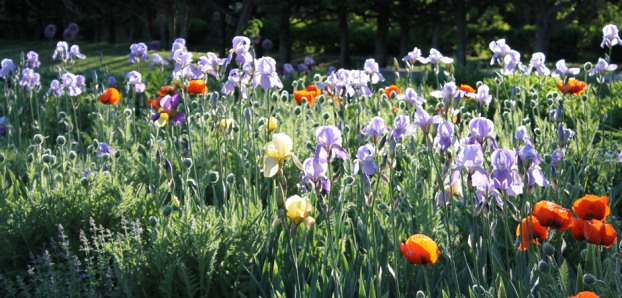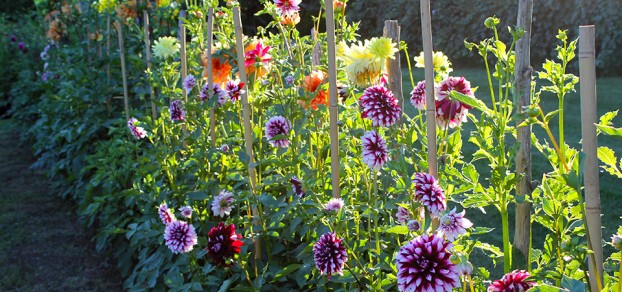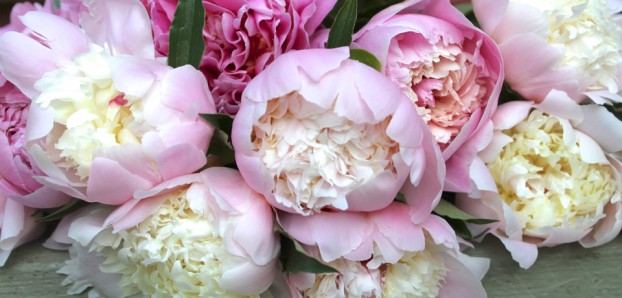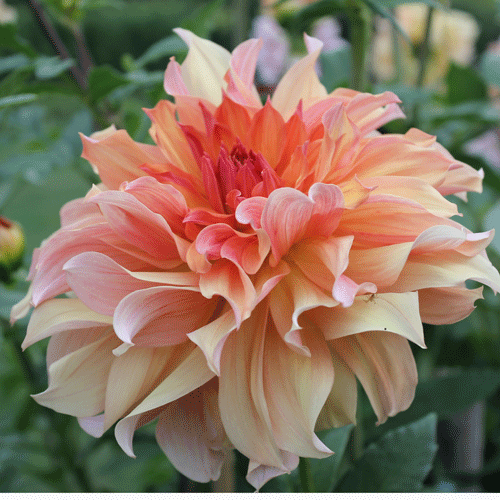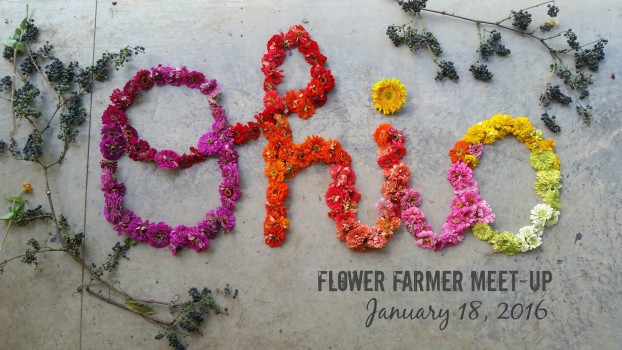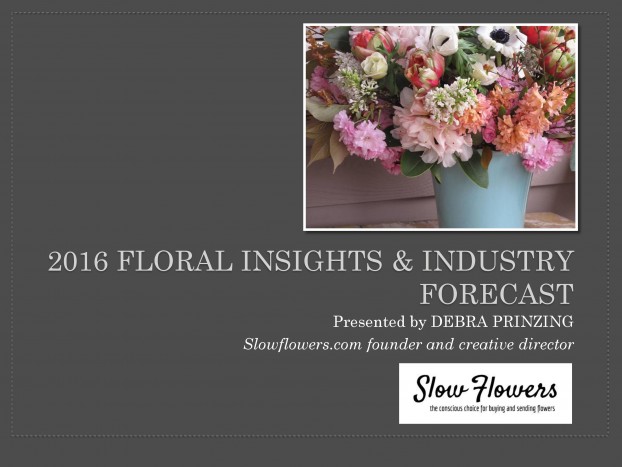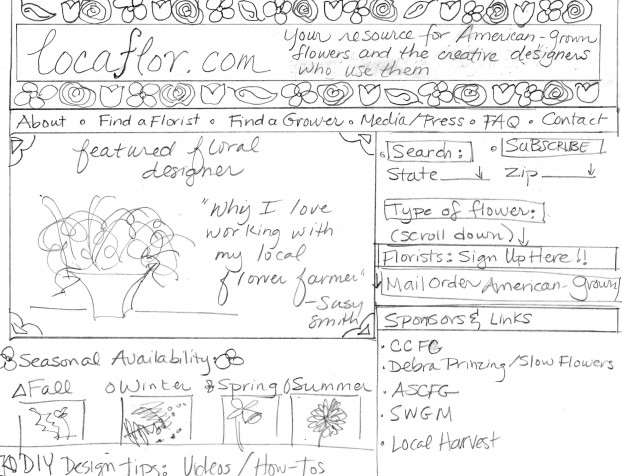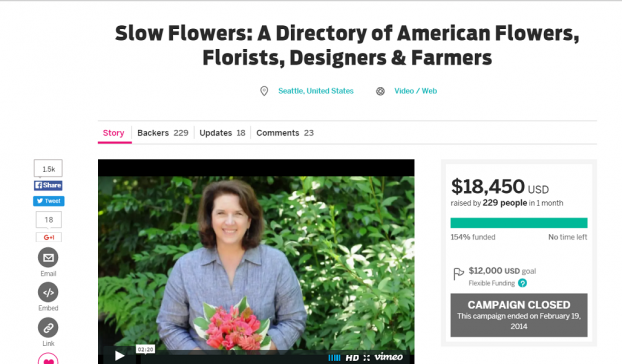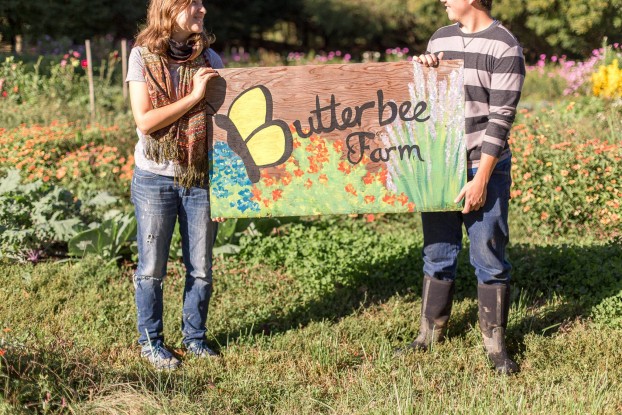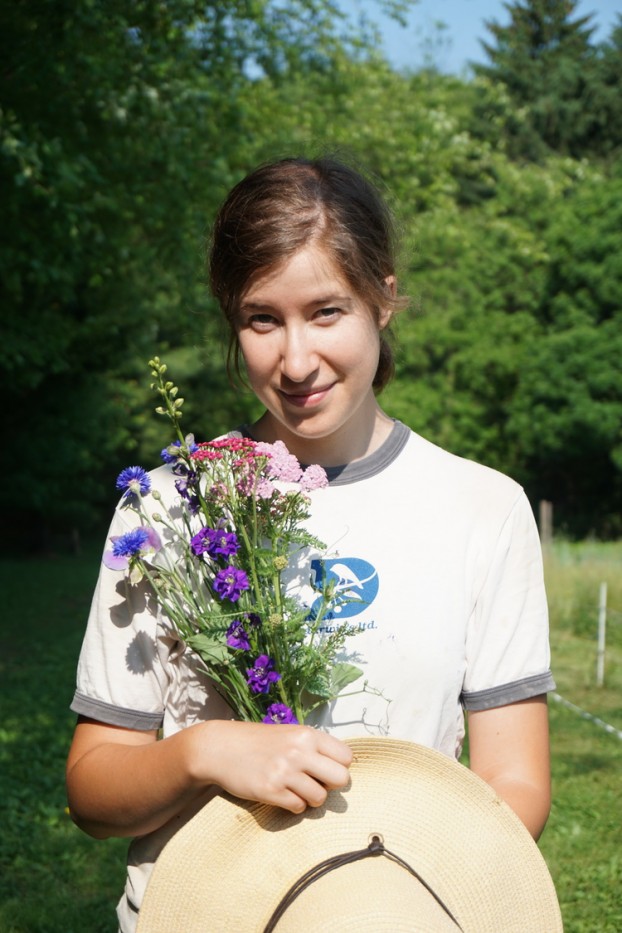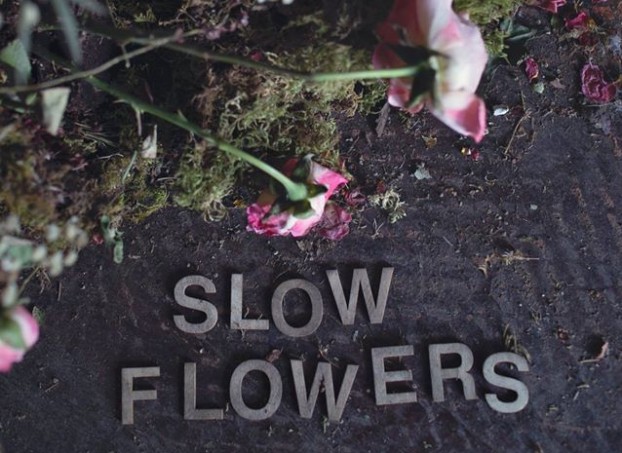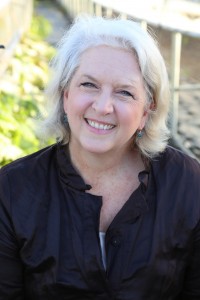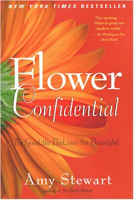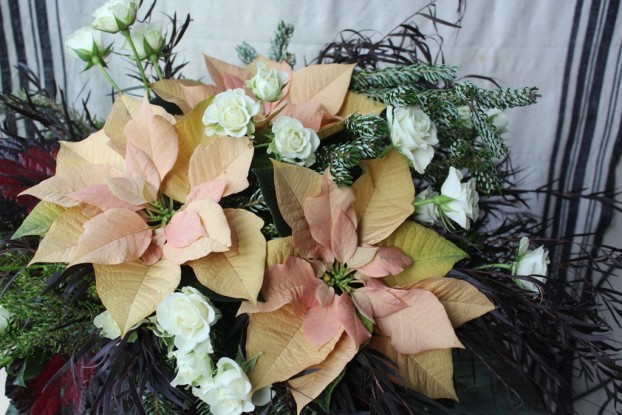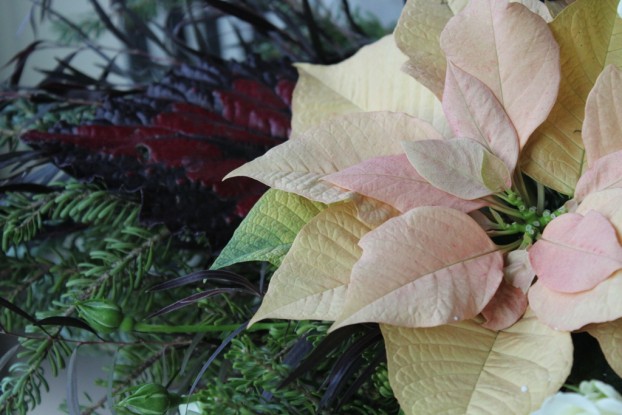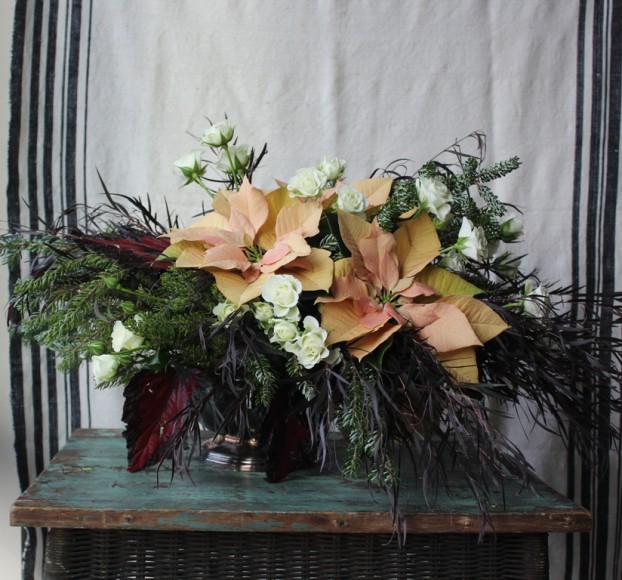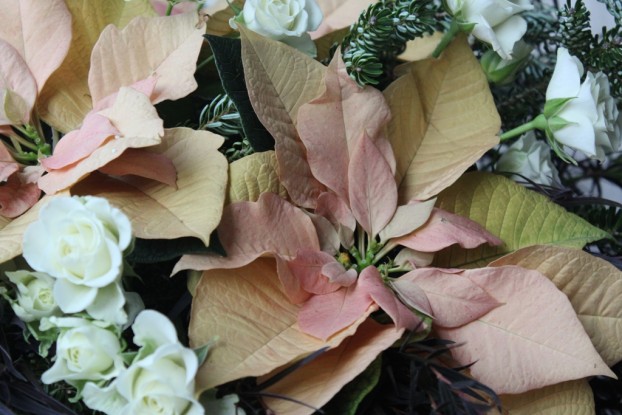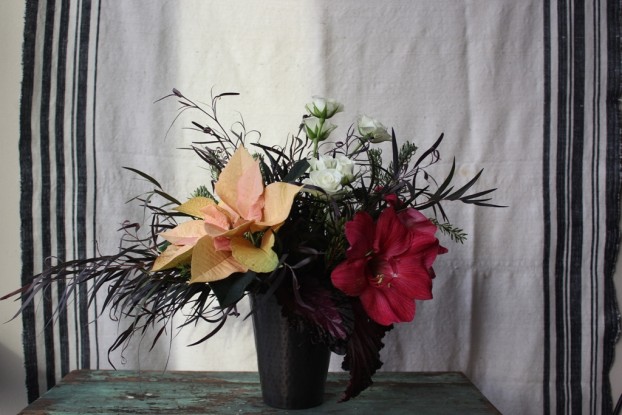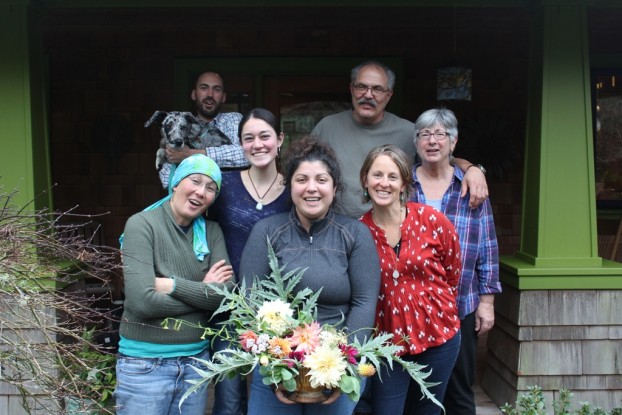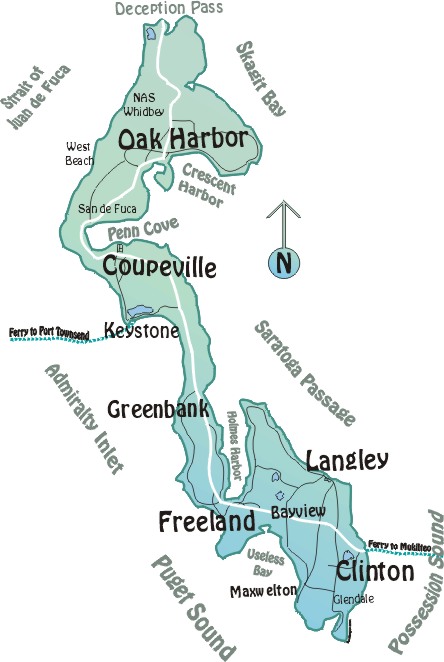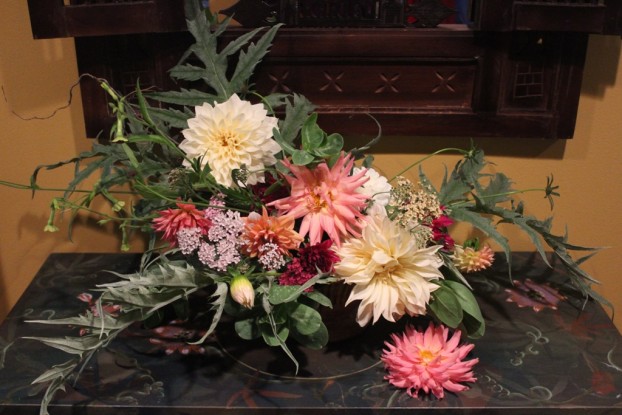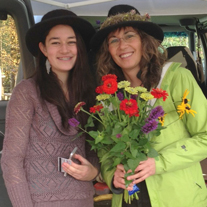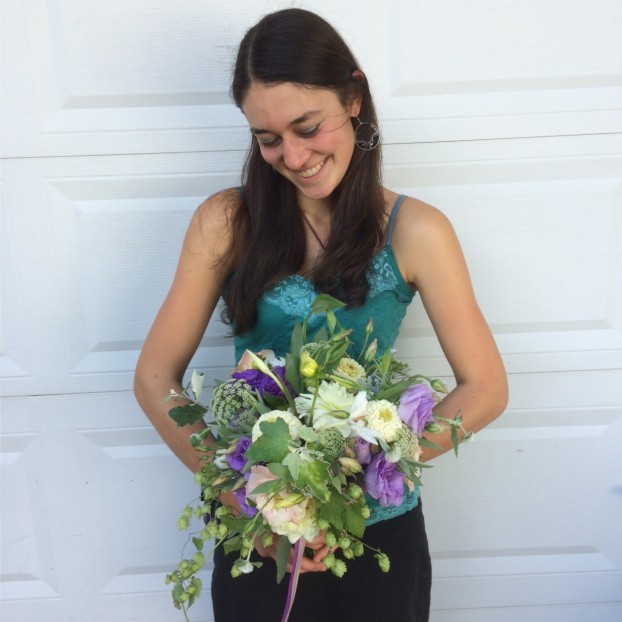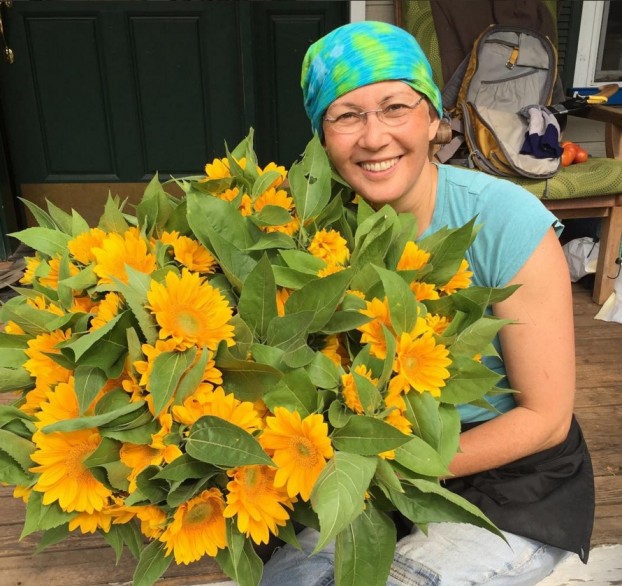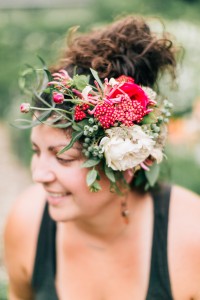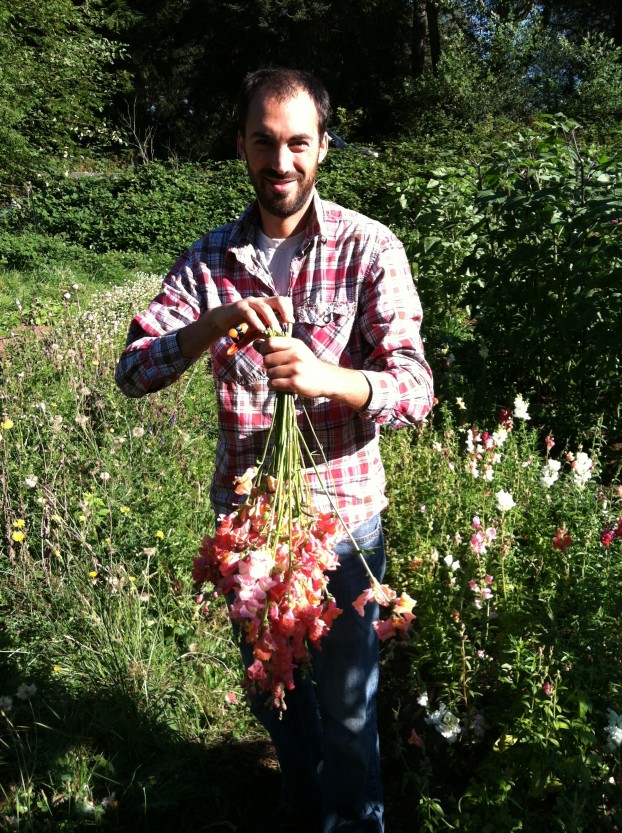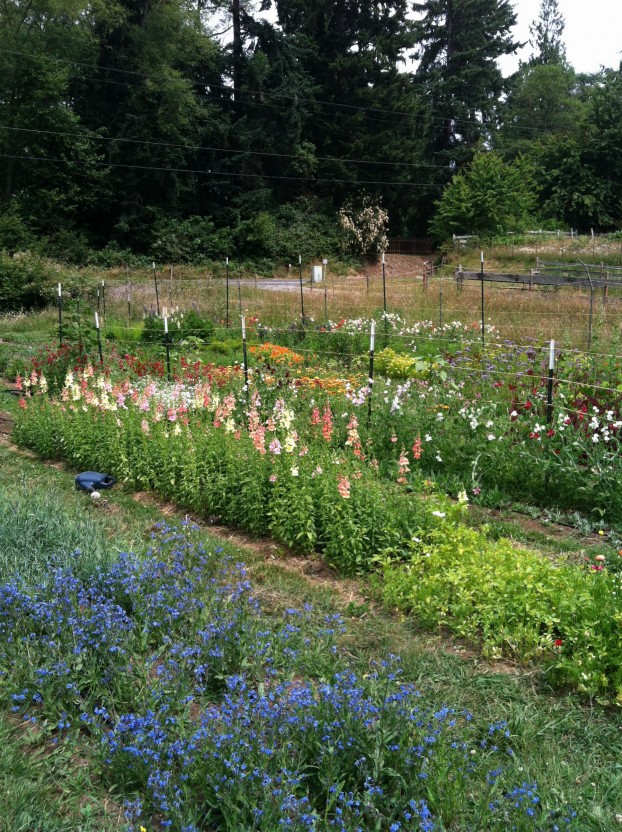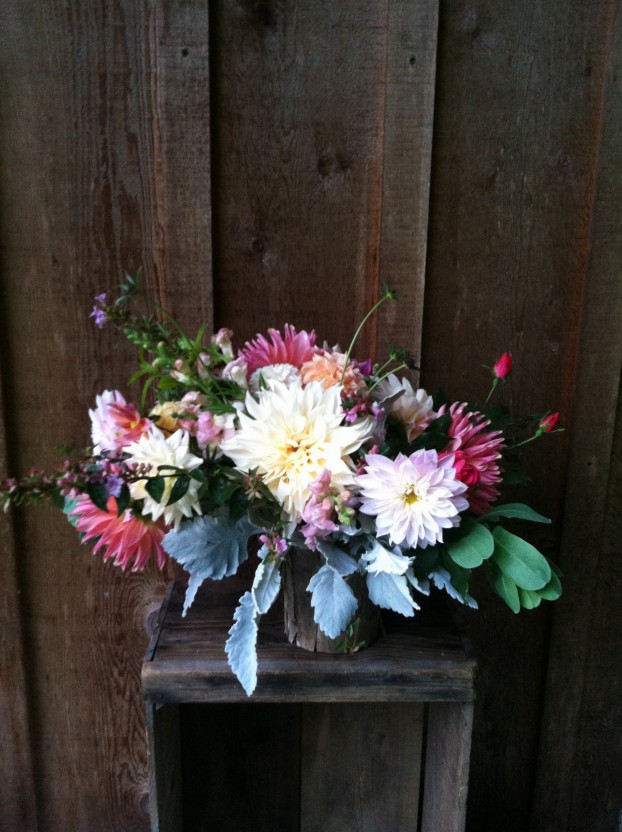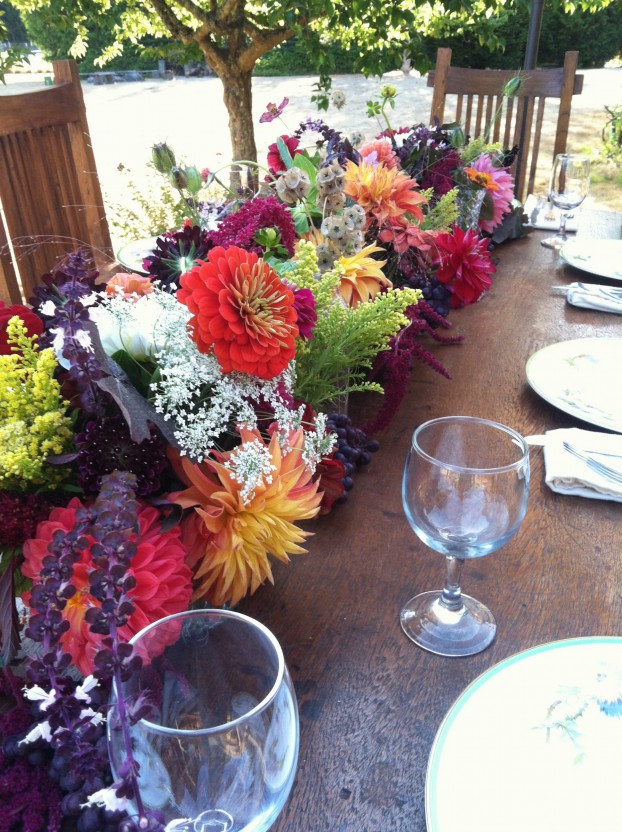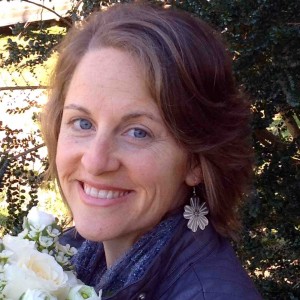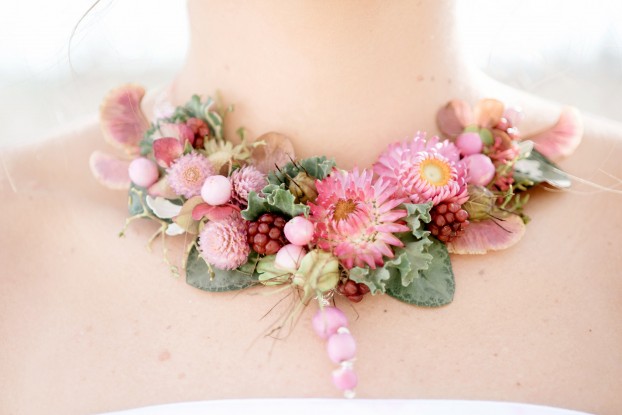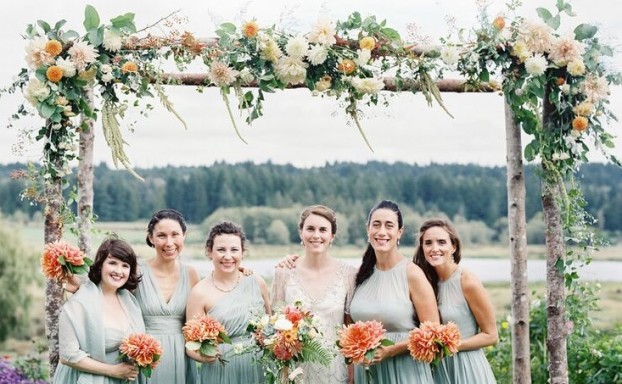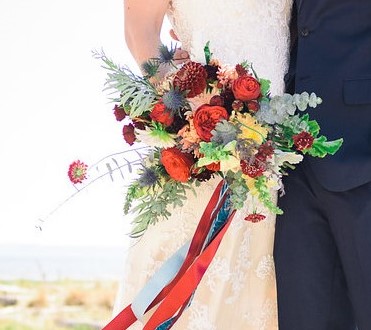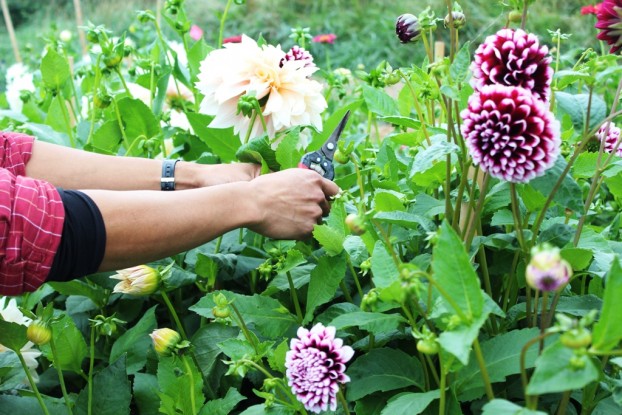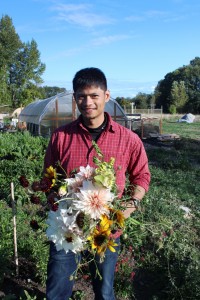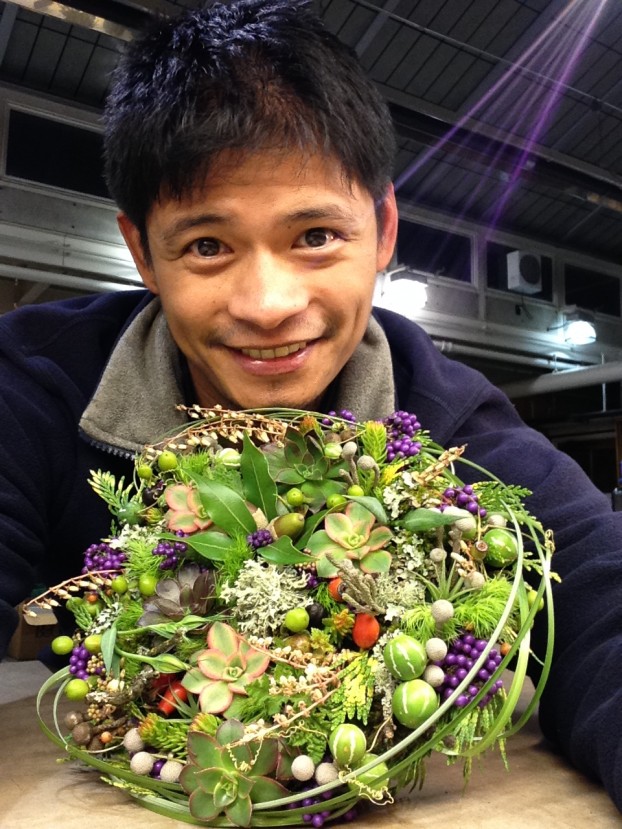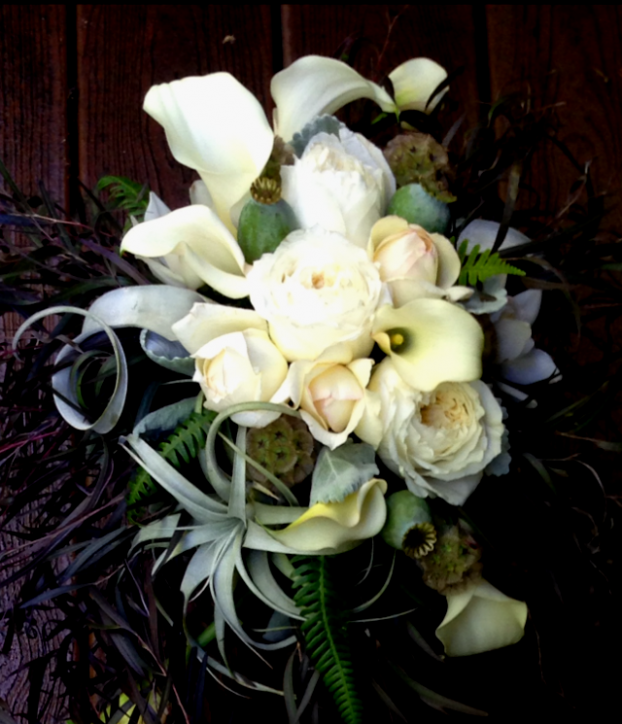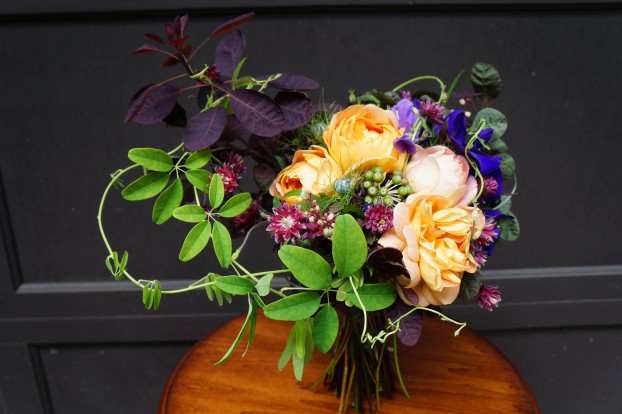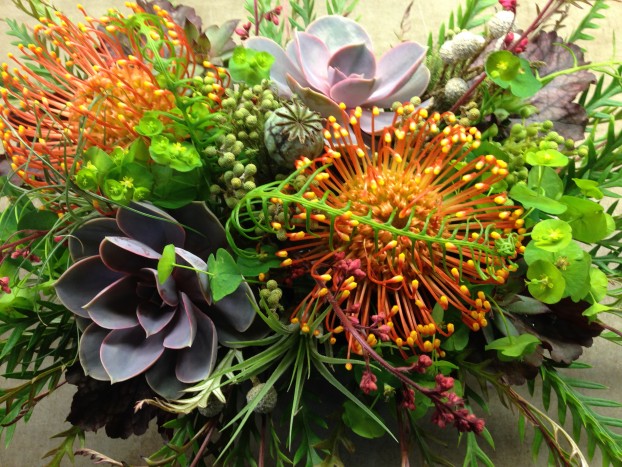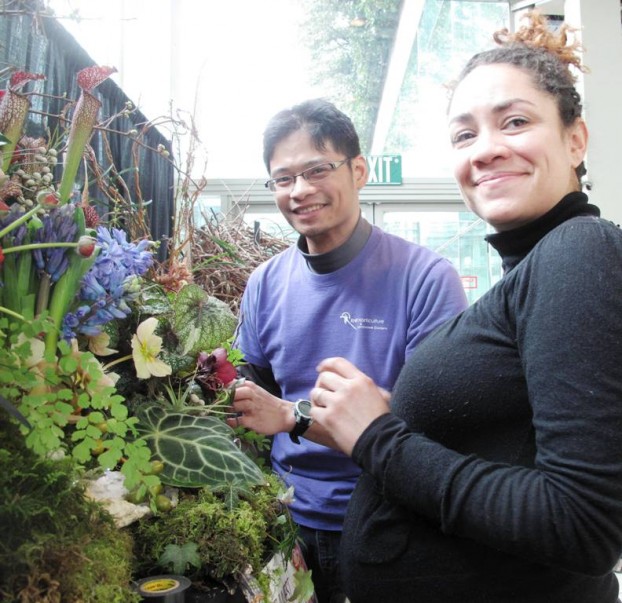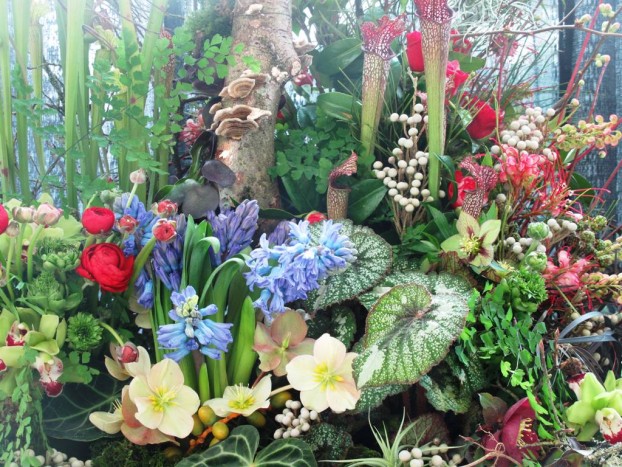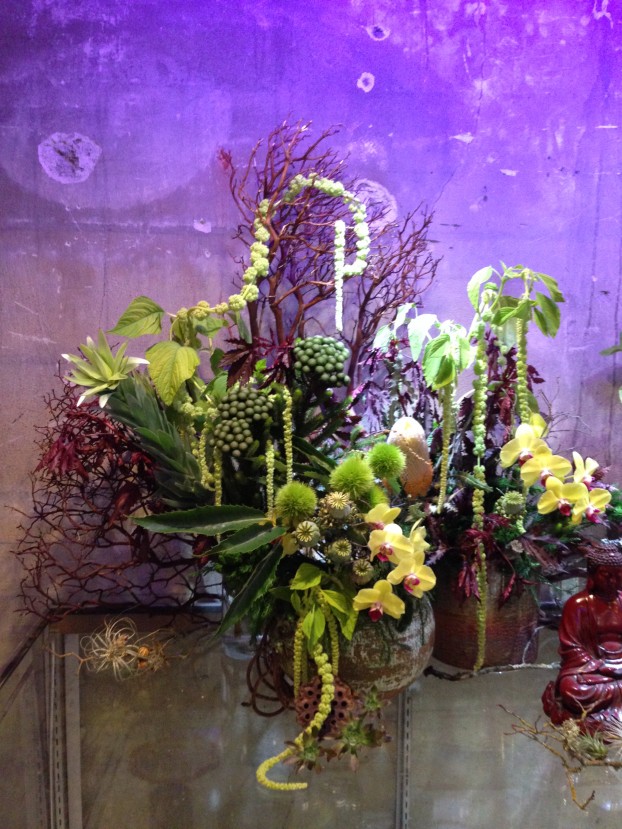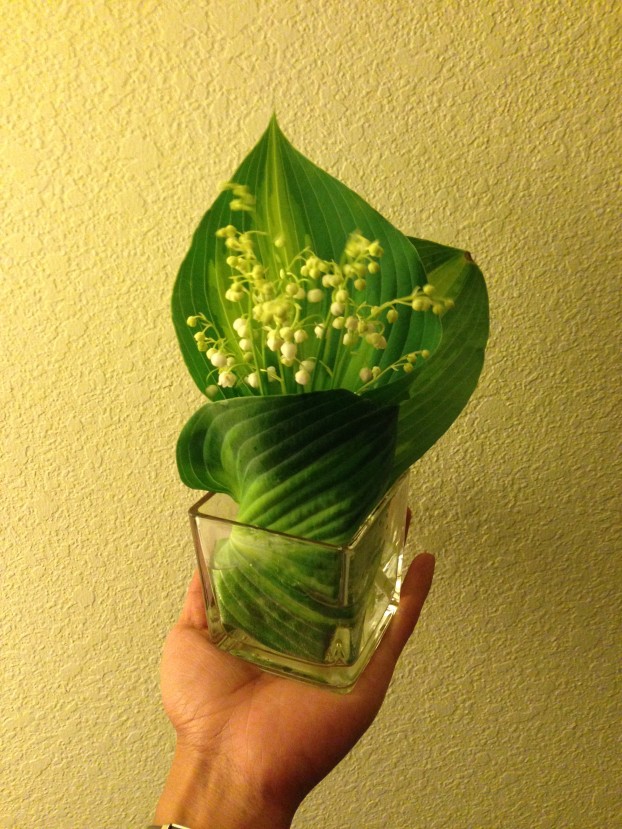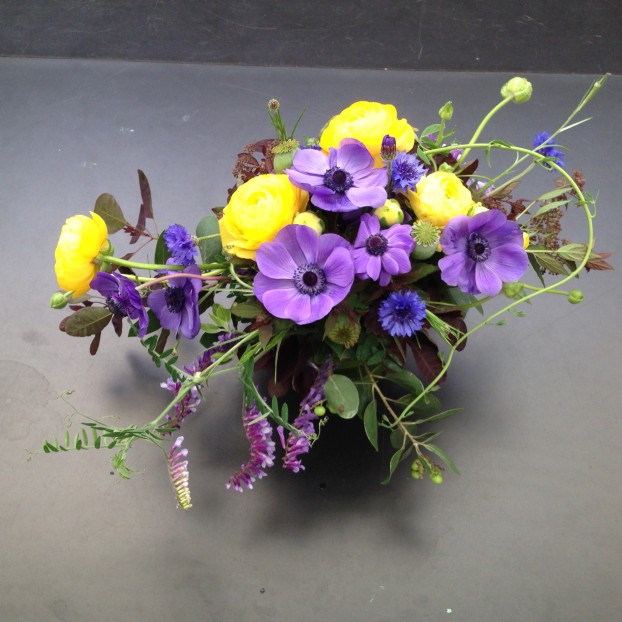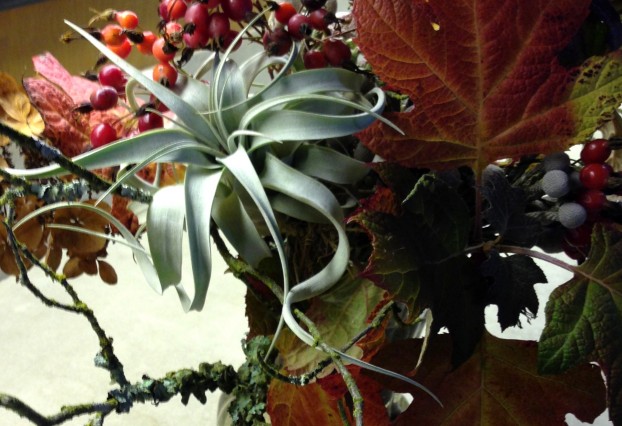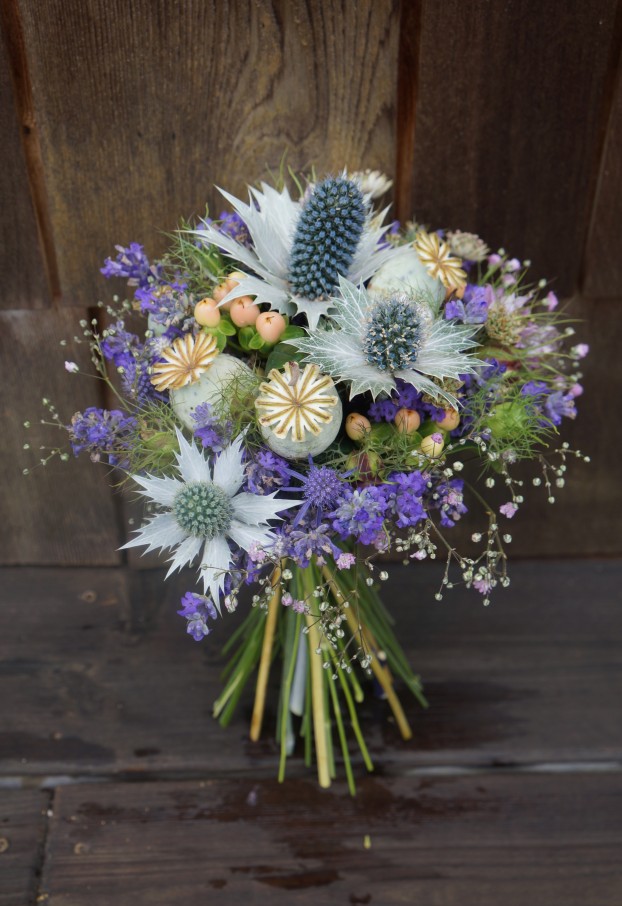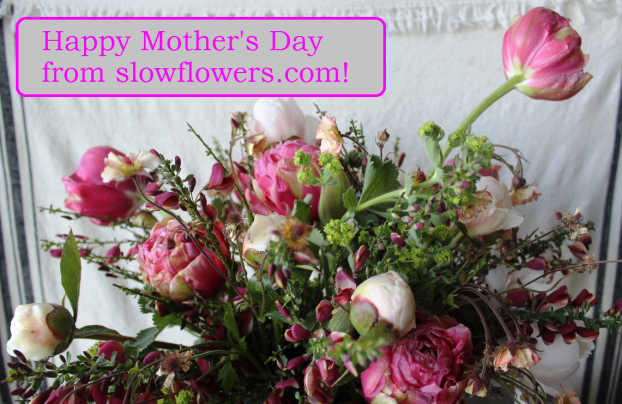
All local Northwest-grown flowers for Mother’s Day from some of my favorite flower farmers, including Ojeda Farms, Triple Wren Farm, Jello Mold Farm, Seattle Wholesale Growers Market.
Make it Local for Your Mother’s Day Bouquets
Debra Prinzing’s Slowflowers.com is a free, nationwide, online directory of American flowers and the farms, shops, studios and designers that supply those blooms. We’ve just added a special link for Canadian-grown flowers, farms, and studios, too. Show your love with local flowers on Mother’s Day, with more than 700 floral members in 48 states to choose from.
Here is a gallery of the diverse American-grown offerings you’ll find at Slowflowers.com.
Tammy Chinn
Decolores Flores (Watsonville, California)
From seed to bouquet:
Alstroemeria, peonies, cerinthe, oenothera, plum branches and roses in an up-cycled cobalt vase. $35 plus delivery in Watsonville/Monterey Bay/Santa Cruz County.
Phone: 831-239-5954
email: pordecoloresflores@gmail.com
Kathleen Barber
Erika’s Fresh Flowers (Warrenton, Oregon)
Treat Mom to a bouquet-a-month during the farm’s prime growing season (May-September). Give her a bouquet that is locally grown, freshly picked and artistically arranged. Erika’s Fresh Flowers offers the five-month flower subscription for Mother’s Day 2016 for $125.
Order by May 8, 2016, at erikasfreshflowers.com/purchase/.
Erika’s delivers to homes and businesses in Astoria, Warrenton/Hammond, Gearhart and Seaside, Oregon.
Phone: 503-791-0538
email: Kathleen@erikasfreshflowers.com
Grace Hensley
eTilth Urban Designs (Seattle, Washington)
Grab-and-Go Contain Gardens for Mother’s Day, Both for shady porches, $100 each for pickup in Seattle:
- An exciting Gold and Flame container featuring Coprosma ‘Tequila Sunrise’, Fuchsia ‘Autumnale’ Redhook Sedge (Uncinia rubra ‘Belinda’s Find’) and Begonia Illumination Golden Picotee.
- A cool Mermaid Container, featuring Heuchera ‘Blackout’, Aquilegia alpina, Festuca ‘Beyond Blue’, Hosta ‘Hadspen Blue’ and Bacopa ‘Gulliver Blue’.
Phone: 206-388-6955
email: grace@etilth.com
Tami Meyer
First and Bloom (Issaquah, Washington)
Can’t take my eyes off you! This one-of-a-kind arrangement will capture all eyes with its vivacious spring colors and 100% American grown blooms, $140 local delivery or pick up for Seattle’s Eastside.
Phone: 425-455-4614
email: info@firstandbloom.com
Pilar Zuniga
Gorgeous and Green (Berkeley, California)
A hand tied bouquet: Fresh, local grown and organic flowers wrapped in paper and delivered by bike to Berkeley, Oakland and Emeryville or available for pickup from the Oakland studio, $50, $85, $120 or $195.
Phone: 510-665-7974
email: shop@gorgeousandgreen.com
Kailla Platt
Kailla Platt Flowers (Portland, Oregon)
Garden-inspired floral design for Mother’s Day using 100% locally grown flowers like Peonies, Iris, Ranunculus, Snapdragons, Columbine and Roses, with lush greens and botanical textures, tucked into a vase for easy presentation. For pick-up or local delivery in Portland, Oregon. $50 and up plus $10 delivery fee.
Phone: 503-709-6680
email: k@kaillaplattflowers.com
Adele Hinkley
Mary Clark Flowers (Chilliwack, British Columbia, Canada)
This delicate display in a vintage Canadian-made mason jar is the perfect Mother’s Day gift. Sweet and simple flowers fill this vase, expressing your sentiment, $50-$70. Delivery for each of these items is included for Agassiz, Chilliwack, Rosedale and Sardis, B.C. Visitors are for studio pick-up.
Phone: 604-796-0666 or 866-792-0666
email: sales@maryclarkflowers.com
Kristin Burrello
Muddy Feet Flower Farm (Ashford, Connecticut)
Fresh, local, farm-grown spring flowers artfully arranged in muddy feet flower farm’s signature style and displayed in a vintage tea cup and saucer, $50. Order online at muddyfeetflowerfarm.com. Pick-up locations available on Saturday, May 7:
- Wintertime Farmers Market at Hope Artiste Village, Pawtucket, RI, 9am-1pm
- Ellington Farmers Market, Ellington, CT 9am-12pm
- Muddy Feet Flower Farm in Ashford, CT 2pm-6pm
Delivery available to Westport, CT Friday, May 6
Phone: 773-355-0177
email: muddyfeetflowers@gmail.com
Janet Walsh
Rose Mountain Floral (Kalispell, Montana)
“Sparrow’s Nest,” a Mother’s Day garden with local lilacs, and a variety of spring tulips, ranunculus, roses, spray roses, lisianthus and local huck with a symbolic nest tucked among the flowers. The moss-touched stone planter is ideal for plantings after Mother’s day, $79. Local delivery or pick-up available. This arrangement was designed for The Sparrow’s Nest, which provides housing for homeless high school students, with 12% of proceeds donated to the cause.
Phone: 406-752-7673
email: rosemountainfloral@gmail.com
LauraLee Symes
Sellwood Flower Co. (Portland, Oregon)
A birch box complete with French striped ribbon, filled with premium Oregon- and Washington-grown flowers, $65 plus $10 delivery in the Portland Metro area or for pick-up at Sellwood Flower Co.
Phone: 503-719-5390
email: info@sellwoodflowerco.com
Stargazer Barn (national shipping from Arcata, California)
Send your mother 10 stems of American Grown “Rose Lilies” (variety is ‘Natalia’) paired with 10 stem of Horsetail (Equisetum), $69.99+ $14 (FedEx Overnight Shipping nationwide) (+$10 to include vase)
web: https://www.stargazerbarn.com/
Melissa Hessney Masters
Tanglebloom (Brookline, Vermont)
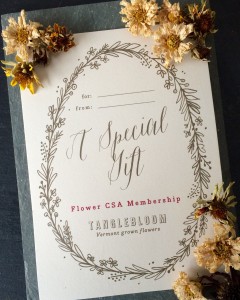 Bouquets of sustainably-grown spring blooms including specialty tulips, flowering branches, and heirloom narcissus (photos of current harvest) for $20. Ready for giving, bunches are wrapped and tied with ribbon for pick-up at the Brookline, Vermont, farm. Also available at local markets including Vermont Country Market in Brattleboro, Vermont.
Bouquets of sustainably-grown spring blooms including specialty tulips, flowering branches, and heirloom narcissus (photos of current harvest) for $20. Ready for giving, bunches are wrapped and tied with ribbon for pick-up at the Brookline, Vermont, farm. Also available at local markets including Vermont Country Market in Brattleboro, Vermont.
Or, Mom can enjoy beautiful local flowers all season long with a gift subscription to Tanglebloom’s Flower CSA (community supported agriculture). We’ll mail (or email) her a lovely gift card designed by an independent artist in time for the holiday. CSA subscriptions start at $95.
more info: tanglebloom.com/flower-csa
Phone: 802-365-0252
email: tanglebloomvt@gmail.com
Melissa Feveyear
Terra Bella Flowers (Seattle, Washington)
Terra Bella Flowers & Mercantile offers unique florals featuring premium, locally-sourced blooms and botanicals. Each vase and wrapped design is inspired from our surrounding woodlands, seasides and flower fields with prices starting at $45. Offering daily delivery throughout the greater Seattle area, we invite you to visit our store or to place orders online 24/7 at www.TerraBellaFlowers.com.
Phone: 206-783-0205
email: info@terrabellaflowers.com
Cindy Hanson
The Herb and Garden (Helena, Montana)
The Herb and Garden Bouquet in a ceramic vase, $25, with refills for $120. Local deliveries available.
Phone: 406-439-6478
email: theherbandgarden@gmail.com
Mary Kate Kinnane
The Local Bouquet (Compton, Rhode Island)
Consider a Mother’s Day gift for the mother who loves flowers and has a green thumb. The Farmer-Florist Design Series feature one-day intensives co-taught by Mary Kate Kinnane and a local flower farmer. Workshops highlight farming and design topics while allowing hands on growing and design techniques, a farm tour, a stylized mini shoot, and a beautiful farm-to-table dinner. Meet and learn from flower farmers and designer who support local and American grown flowers year round. Choose between one of three classes, each with a specific farm and design topic: $425 per workshop, with a 15% discount when you sign up for all three.
Phone: 401-598-6812
email: marykate@thelocalbouquet.com
Mindy Francis
Two Little Buds (Hamilton, Ohio)
Gorgeous, locally grown ranunculus and anemones in a keepsake compote bowl, from $55 to $85 and up. Delivery available to Cincinnati and surrounding areas (check website for delivery range), $12-15. Pick-up available: Two Little Buds, 3431 Princeton Road, Ste 103, Hamilton, Ohio 45011 (513-737-8527); or Lane and Kate, 29 East High Street, Oxford, Ohio 45056 (513-523-1004)
email: twolittlebuds@fuse.net
web: www.twolittlebuds.com









